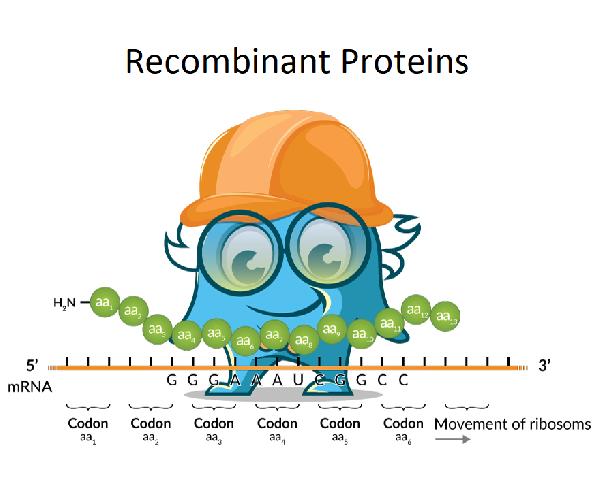Product Info Summary
| SKU: | PROTO15496 |
|---|---|
| Size: | 2ug, 10ug, 1mg |
| Origin Species: | Human |
| Source: | Escherichia coli |
Customers Who Bought This Also Bought
Product info
Product Name
PLA2G10 Secreted Phospholipase A2-X Human Recombinant Protein
View all Phospholipase A2 X recombinant proteins
SKU/Catalog Number
PROTO15496
Size
2ug, 10ug, 1mg
Description
Secreted Phospholipase A2-X Human Recombinant is manufactured with N-terminal fusion HisTag. PLA2G10 His-Tagged Fusion Protein, is 15.5 kDa containing 123 amino acid residues of the human secreted phospholipase A2-X and 16 additional amino acid residues - HisTag (underlined).
Storage & Handling
Store lyophilized protein at -20°C. Aliquot the product after reconstitution to avoid repeated freezing/thawing cycles. Reconstituted protein can be stored at 4°C for a limited period of time; it does not show any change after two weeks at 4°C.
Cite This Product
PLA2G10 Secreted Phospholipase A2-X Human Recombinant Protein (Boster Biological Technology, Pleasanton CA, USA, Catalog # PROTO15496)
Form
Sterile Filtered lyophilized (freeze-dried) powder.
Formulation
PLA2G10 filtered (0.4 µm) and lyophilized from 0.5mg/ml solution in 20mM Tris and 50mM NaCl, pH 7.5.
Purity
Greater than 95% as determined by SDS PAGE.
Predicted MW
18.153kDa
Reconstitution
It is recommended to add deionized water to prepare a working stock solution of approximately 0.5mg/ml and let the lyophilized pellet dissolve completely.
Amino Acid Sequence
Assay dilution & Images
Reconstitution
It is recommended to add deionized water to prepare a working stock solution of approximately 0.5mg/ml and let the lyophilized pellet dissolve completely.
Validation Images & Assay Conditions

Click image to see more details
Recombinant protein fun image
Protein Target Info & Infographic
Gene/Protein Information For PLA2G10 (Source: Uniprot.org, NCBI)
Gene Name
PLA2G10
Full Name
Group 10 secretory phospholipase A2
Weight
18.153kDa
Superfamily
phospholipase A2 family
Alternative Names
Group 10 secretory phospholipase A2; EC 3.1.1.4; Group X secretory phospholipase A2; Phosphatidylcholine 2-acylhydrolase GX; GX sPLA2; sPLA2-X; SPLA2; GXPLA2; MGC119918; MGC119919; MGC133367; PLA2G10 PLA2G10 GXPLA2, GXSPLA2, SPLA2, sPLA2-X phospholipase A2 group X group 10 secretory phospholipase A2|group X secretory phospholipase A2|phosphatidylcholine 2-acylhydrolase 10
*If product is indicated to react with multiple species, protein information is based on the gene entry specified above in "Species".For more info on PLA2G10, check out the PLA2G10 Infographic

We have 30,000+ of these available, one for each gene! Check them out.
In this infographic, you will see the following information for PLA2G10: database IDs, superfamily, protein function, synonyms, molecular weight, chromosomal locations, tissues of expression, subcellular locations, post-translational modifications, and related diseases, research areas & pathways. If you want to see more information included, or would like to contribute to it and be acknowledged, please contact us at [email protected].
Specific Publications For PLA2G10 Secreted Phospholipase A2-X Human Recombinant Protein (PROTO15496)
Hello CJ!
No publications found for PROTO15496
*Do you have publications using this product? Share with us and receive a reward. Ask us for more details.
Recommended Resources
Here are featured tools and databases that you might find useful.
- Boster's Pathways Library
- Protein Databases
- Bioscience Research Protocol Resources
- Data Processing & Analysis Software
- Photo Editing Software
- Scientific Literature Resources
- Research Paper Management Tools
- Molecular Biology Software
- Primer Design Tools
- Bioinformatics Tools
- Phylogenetic Tree Analysis
Customer Reviews
Have you used PLA2G10 Secreted Phospholipase A2-X Human Recombinant Protein?
Submit a review and receive an Amazon gift card.
- $30 for a review with an image
0 Reviews For PLA2G10 Secreted Phospholipase A2-X Human Recombinant Protein
Customer Q&As
Have a question?
Find answers in Q&As, reviews.
Can't find your answer?
Submit your question


